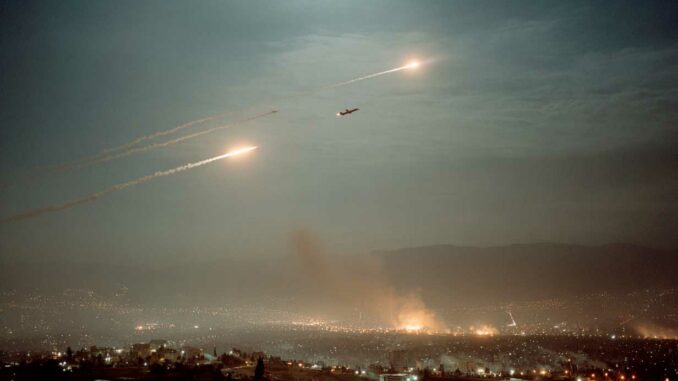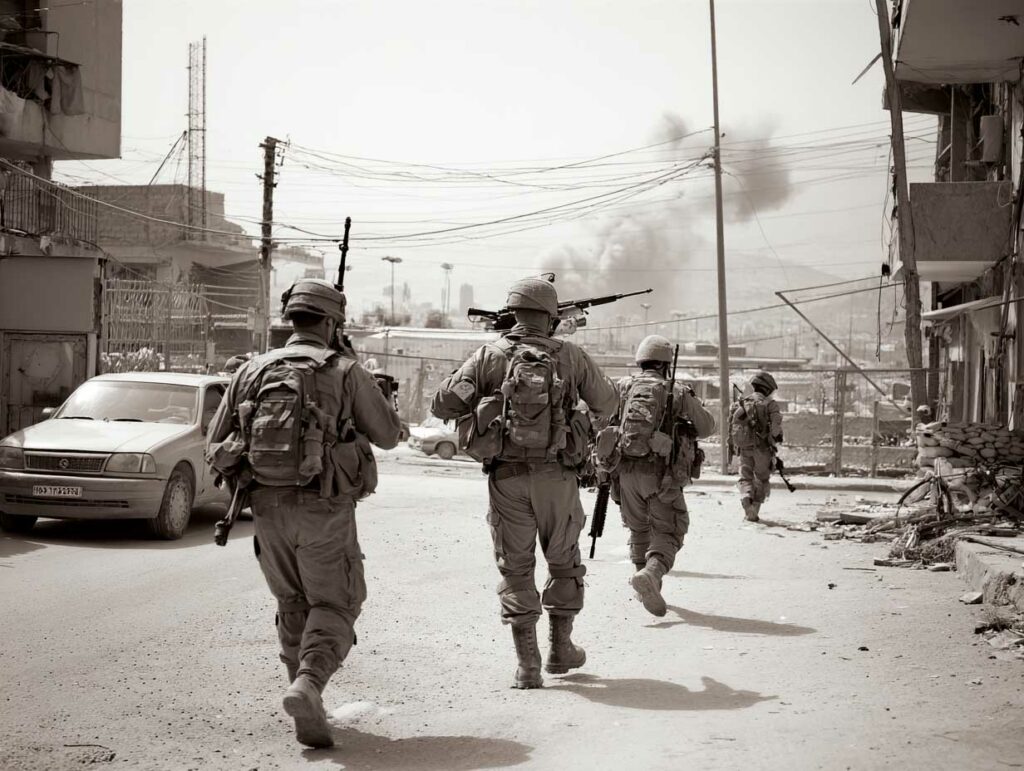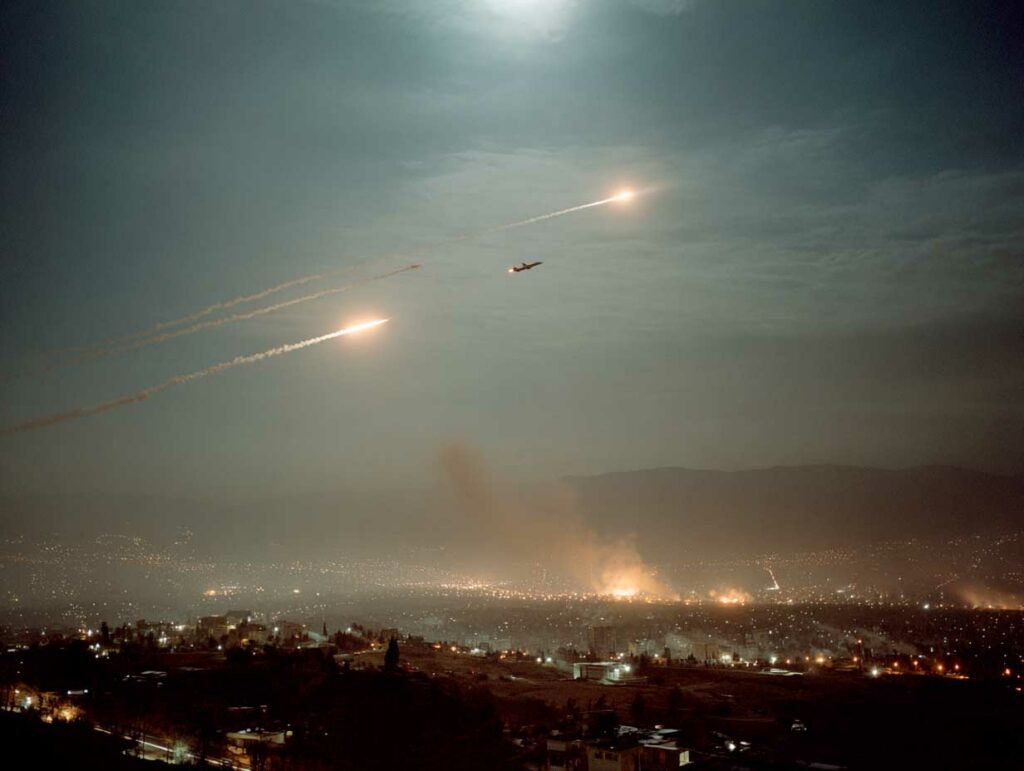
Detailed analysis of Israeli strikes in Iran as of June 17, 2025: impact on Iran’s nuclear program, military capabilities, and Tehran’s response.
On June 13, 2025, Israel launched Operation Rising Lion, a large-scale air strike campaign against Iran, targeting its nuclear and military infrastructure. This offensive, mobilizing 200 fighter jets against 100 targets, aims to neutralize the Iranian nuclear threat and weaken Tehran’s offensive capabilities. Over four days, the conflict intensifies, with Iran responding with barrages of ballistic missiles and drones on Tel Aviv and Jerusalem. As of June 17, the tactical and strategic assessment reveals Israeli successes, but also technical limitations and uncertain consequences. The deaths of senior Iranian officials, such as General Hossein Salami, and the damage to sites such as Natanz contrast with the resilience of the underground facility in Fordo. This conflict, described as a war by Tehran, is redefining the regional balance of power. This article analyzes the impact on people, military forces, infrastructure, Iran’s military capability, its response, and its nuclear potential, drawing on accurate data to provide a technical and strategic assessment.

The human toll of the strikes
Iranian casualties
According to the Iranian Ministry of Health, Israeli strikes had killed 224 people and injured more than 1,000 in Iran as of June 17. Among the victims were 78 civilians, including women and children, who died mainly in Tehran, where residential neighborhoods close to military bases were hit. Six key nuclear scientists, including Abdolhamid Minouchehr and Fereydoun Abbasi, were killed, weakening the expertise of Iran’s nuclear program. The deaths of Revolutionary Guard commander Hossein Salami and Chief of Staff Mohammad Bagheri represent a serious blow to Iran’s chain of command. These targeted killings, likely orchestrated by Mossad, were intended to disrupt decision-making structures.
Israeli casualties
In retaliation, Iran launched dozens of ballistic missiles at Israel, killing 24 people and wounding hundreds, mainly in Tel Aviv and Haifa. One missile struck the Weizmann Institute in Rehovot, a strategic scientific center, killing three researchers and damaging critical infrastructure. Israeli civilian casualties were limited thanks to the Iron Dome defense system, which intercepted 90% of the projectiles. However, the Iranian barrage, which included Fattah hypersonic missiles, revealed flaws in Israel’s air defense, particularly against saturation attacks.
Strategic impact
The loss of high-ranking Iranian officials temporarily slows down Tehran’s military and scientific coordination. In Israel, although limited, the human and material damage highlights the vulnerability of urban centers. Psychological warfare is intensifying, with Tehran promising “severe revenge” and Israel threatening further strikes. These human losses fuel potential escalation, making diplomatic negotiations more complex.
The impact on Iranian nuclear facilities
Targeted sites
The Israeli strikes targeted three major nuclear sites: Natanz, Fordo, and Isfahan. The Natanz enrichment plant in Isfahan province suffered significant surface damage. According to the IAEA, the destruction of the main buildings and electrical networks has disabled 60% of Natanz’s centrifuges, or about 6,000 units. In Isfahan, a uranium conversion plant was dismantled, compromising the production of raw material for enrichment. Fordo, located 800 meters underground, suffered only minor damage, with its underground infrastructure remaining intact.
Technical limitations
Israel lacks bunker-busting bombs, such as the US Massive Ordnance Penetrator (MOP), capable of destroying fortified sites such as Fordo. The munitions used, probably GBU-28s, damaged the surface infrastructure but did not reach the underground centrifuges. Iran had anticipated these attacks, moving 30% of its enriched uranium to secret sites before the strikes. The remaining stockpiles at Natanz, estimated at 275 kg of 60% enriched uranium, remain partially operational.
Strategic consequences
The partial destruction of Natanz delays Iran’s nuclear program by two to three years, according to the Institute for Science and International Security (ISIS). However, Fordo guarantees Tehran a clandestine enrichment capacity. The strikes could push Iran to accelerate its program, particularly in response to the loss of scientists. The absence of radioactive contamination, confirmed by the IAEA, limits environmental risks, but a future attack on the Bushehr power plant could have serious consequences.
The state of Iran’s military capabilities and its response
Iranian arsenal
Before the strikes, Iran had 3,000 ballistic missiles, including Qadr-H, Fateh-110, and Fattah hypersonic missiles, as well as 10,000 drones, according to the International Institute for Strategic Studies (IISS). The Israeli attacks destroyed 20% of missile launchers and three production facilities in Tehran and Tabriz. The Tabriz air base was dismantled, depriving Iran of 15% of its air capabilities. However, 70% of the arsenal remains operational, stored in underground sites.
Iranian response
Since June 13, Iran has launched 200 missiles and 500 drones at Israel, targeting military bases and urban centers. The ninth salvo, on June 16, hit the Weizmann Institute and a power plant near Haifa, killing eight people. The Revolutionary Guards have promised attacks “without interruption until dawn,” but the missiles’ accuracy remains limited, with only 10% of the projectiles hitting their targets. The inexpensive Shahed-136 drones (€20,000 each) are overwhelming Israeli defenses, but their strategic impact is low.
Strategic assessment
The Israeli strikes have reduced Iran’s offensive capabilities, but not its resilience. Iran still has 600,000 active troops, six times more than Israel (170,000). The loss of key commanders has temporarily disrupted operations, but Tehran can count on its allies, such as Hezbollah, for asymmetric actions. Iran’s response, while spectacular, has been ineffective against the Iron Dome. An escalation toward regional targets, such as US bases in Iraq, remains unlikely in order to avoid direct US intervention.


The outlook for Iran’s nuclear program
Current status
Before the strikes, Iran had 275 kg of uranium enriched to 60%, enough for 10 nuclear bombs in an ideal scenario, according to Israeli intelligence. The attacks destroyed 40% of the stockpiles in Natanz and Isfahan, but Fordo retains an enrichment capacity of 83.7%, close to the military threshold (90%). The loss of six scientists is slowing down research, but Iran still has 200 nuclear experts, according to ISIS.
Iranian options
Tehran could accelerate its program by transferring the remaining uranium to secret sites. A nuclear test, although risky, would strengthen its deterrence posture but further isolate Iran diplomatically. Alternatively, Tehran could agree to negotiations, as proposed via Qatar, to freeze its program in exchange for sanctions relief (estimated at $100 billion in annual losses). However, negotiating under the threat of strikes puts Iran in a weak position.
Challenges for Israel
Completely neutralizing Iran’s nuclear program would require ground intervention or US support, both of which are out of the question in the short term. A tactical Israeli nuclear strike on Fordo, as suggested by some analysts, would lead to international condemnation and regional escalation. The theory of victory for Israel is based on a lasting weakening of Tehran, but without US support, this goal remains out of reach. The current strikes, while tactically successful, do not eliminate the strategic threat.
War Wings Daily is an independant magazine.